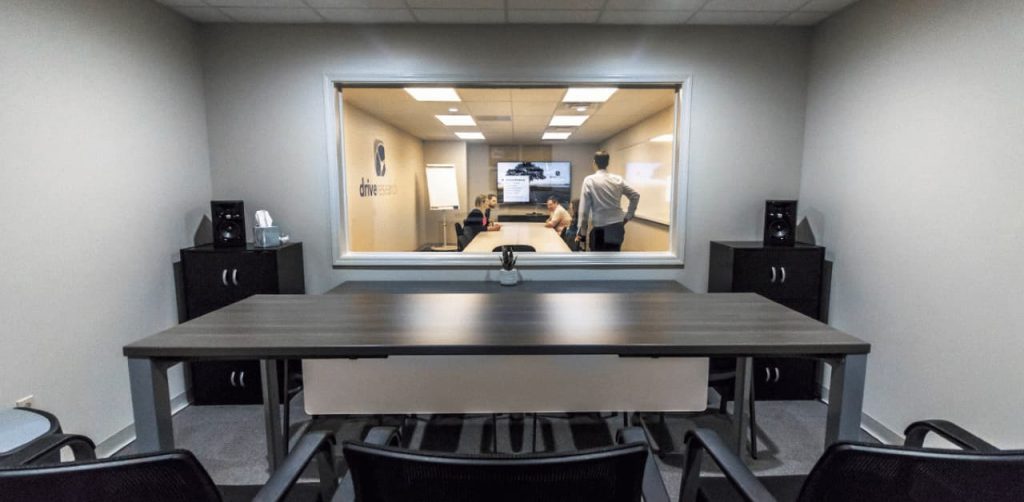
Ever wish you could eavesdrop on your customers’ Slack channels, quarterly planning meetings, and coffee-break rants—all at once? That’s the magic of a solid Voice of Customer (VoC) program.
In B2B, where a single buyer can make or break revenue targets and product roadmaps, guessing what they need just won’t cut it. This friendly guide shows you how to turn raw feedback into crisp insights that power smarter marketing, faster product tweaks, and stronger client loyalty.
Ready to listen in and let your customers finish writing your strategy for you? Let’s dive in.
What is Voice of Customer in B2B Industries?
Voice of Customer (or VoC) research is an incredibly valuable tool that enables B2B companies to gather key insights. At its heart, VoC research focuses on understanding the needs, preferences, and expectations of your customers.
Participants for VoC research can be potential clients, customer organizations, business professionals, or even competitors in the field.
VoC in B2B research focuses on groups of key individuals, such as:
- A panel of Fortune 500 CEO
- An association of medical professionals
- A group of IT professionals
- Partners at top law firms
Curious on what the differences are between B2B and B2C? Check out this blog post!
Why Voice of Customer in B2B is So Important
Instead of guessing what the procurement lead, end user, and CFO each care about, you hear it straight from the source—often in language you can copy-and-paste into your next pitch deck.
Because B2B deals are high-stakes and relationship-driven, even a single insight can translate into millions in revenue or years of loyalty.
Here’s what a well-run B2B VoC study unlocks and how our clients have used it:
| Goal | How VoC Helps | Quick Example |
|---|---|---|
| Review products & services | Spot feature gaps, pricing friction, or onboarding headaches before churn shows up in the metrics. | A SaaS HR platform learned that HR directors were exporting data to Excel for quarterly board reports. They added a one-click board-ready PDF export and cut churn 12%. |
| Identify growth opportunities | Surface unmet needs and “nice-to-have” ideas worth turning into revenue lines. | A specialty chemical supplier discovered clients were buying a competitor’s eco-friendly variant. They fast-tracked an R&D project and won back $8 M in annual contracts. |
| Build customer loyalty | Prioritize high-impact fixes and perks that strengthen relationships beyond the renewal cycle. | An industrial equipment manufacturer introduced a 24-hour spare-parts guarantee after VoC interviews revealed downtime panic. Net Promoter Score jumped 18 points. |
B2B Voice of Customer Methodologies to Collect Data
VoC research can take many forms, including online surveys, in-depth interviews, focus groups, or even analysis of customer reviews.
As with any kind of research, choosing a B2B research methodology varies largely depending on the goals and limitations of the project.
See the following sections to help you decide which approach best fits your needs. These are the methods our B2B market research company would most recommend.
Online Surveys
Online surveys are a fantastic methodology to hear from a lot of customers.
An entire medical association can give you their feedback on a prototype medical device, a panel of CEOs can inform you on their long-term market outlook, or a group of cybersecurity experts can advise you on the next generation of security threats.
The scale and reach that online surveys provide are second to none in the research world and typically have faster turnaround times!
However, B2B audiences tend to be more expensive than their B2C counterparts.
After all, getting a business professional to take a survey may be harder than getting any ordinary consumer. The Cost Per Incidence (CPI) can be upwards to 25 times more expensive!
In-Depth Interviews
IDIs are a great way to get detailed information while leaving room for follow-ups.
This design is best-suited for research objectives that focus on exploration, such as gathering product feedback, exploring emerging market opportunities, or understanding a customer’s buying process. Topics where you may not know what the potential answers look like.
IDIs can be structured or semi-structured. In a structured interview, the researcher follows a predetermined set of questions and rarely deviates, while in a semi-structured interview, there are opportunities to explore new topics that may arise during the conversation.
While great for getting in-depth information and relatively inexpensive, IDIs lack scale. The 1:1 interview nature makes it logistically difficult to gather many responses.
On the data side, this also makes it more susceptible to bias or individual subjectivity when compared to any other method.
Interested in learning more about IDIs? Learn more about it in our In-Depth Interview Guide.
Focus Groups
Whether understanding new challenges in a particular market, investigating white spaces for a new product/service, or understanding the needs of a certain audience, B2B focus groups are a great way to aggregate feedback from clients.
This technique focuses on gathering members of your target audience for a group discussion. This allows customers to bounce ideas off each other, generating fruitful and thoughtful discussions to glean insights from.
In the B2B space, recruitment is a constant issue as finding and scheduling a group of business executives or thought leaders can prove to be difficult. This form of research is also prone to groupthink and requires a strong and knowledgeable moderator to guide the discussion in productive and nuanced ways.

Customer Reviews
Customer reviews can be a quick and easy method of getting feedback.
This is a great way to keep track of the pulse of your B2B customers, benchmark against competitors, and understand the biggest strengths or issues of your product or service.
Customer reviews typically require little cost, as there are many review platforms available for customers to post their ratings and thoughts, as well as internal tools to store reviews in-house.
Reviews are a quick and dirty way to get insights and as such can lack the depth to make larger decisions. Reviews can be prone extremity bias, where only customers facing issues or are raving about your product are most likely to leave reviews.
This leads to highly polarized, skewed data.
Website Data
Gathering website data is invaluable for understanding your customers’ platform experience. By analyzing click-through rates and customer journey maps, you can gain insights into how users interact with your content.
This data can also reveal friction points hindering engagement, interest with calls to action, and overall help you optimize for better stickiness and overall engagement.
Unlike self-reported data found in surveys or focus groups, website data relies purely on behavioral tracking, giving it a strong, unbiased, unfiltered view. Focusing on how customers act rather than how they say they act.
But this type of research tends to lack the why behind the action and typically needs to be supplemented with other data sources to build a clearer picture.
Best-Practice VoC Survey & Discussion Guide Design
Ask any busy CFO or chief engineer to fill out a questionnaire and you’ll discover a universal truth: if they have to reread a question, you’ve already lost them. The secret to designing high-impact B2B surveys and discussion guides is to keep the language plain, the pacing brisk, and the order intentional.
Start with warm-up questions that require zero mental gymnastics—role, tenure, rough spend level.
Once respondents feel oriented, ease into current-experience prompts (“Tell us about the last time you used X”). These narrative questions unlock context you can’t get from ratings alone.
From there, dive into pain points and gaps.
Think the areas where processes slowed, budgets ballooned, or security teams threw up red flags.
Finally, close with future-focused asks: “If you could wave a magic wand, what would version 2.0 deliver?”
Ending on possibility keeps interviews upbeat and surfaces roadmap gold.
Other recommended best practices from our experts
- Balance closed scales with open ends.
A quick 1–5 satisfaction rating gives you a comparable metric; the follow-up “What drove that score?” provides the color. For live interviews, keep a probing cheat sheet handy. Ladder questions from “Why is that important?” to “What would success look like six months after implementation?” so you never miss the deeper motivation. - Respect their calendar.
Online surveys should top out around 20–25 questions (8–12 minutes). In-depth interviews run best at 30 minutes with a shared one-page agenda so executives can see the finish line. - Never skip the soft launch.
A test run with a small sample of respondents will reveal jargon that needs translating, logic branches that misfire, and any “nice-to-know” questions you can happily cut.
Common Pitfalls—and How to Dodge Them
Even the most thoughtfully crafted VoC program can stumble. Below are the usual suspects our research firm sees and a few quick pivots to keep your study credible and customer-led.
- Survey fatigue creeps in right after the 10-minute mark, producing rushed answers or outright abandonments. Trim “just-curious” items, add a progress bar, and promise (then deliver) a concise findings snapshot as a thank-you.
- Confirmation bias is another silent killer. When you ask questions designed to prove your hypothesis—“How well did we exceed expectations?”—you blind yourself to the possibility you didn’t. Write neutrally, share the draft with a team skeptic, and invite them to poke holes.
- Jargon overload happens when internal buzzwords leak onto the page. Your respondents aren’t inside your Slack channel; replace acronyms or add a brief parenthetical (e.g., “annual contract value”) the first time it appears.
- Over-indexing on outliers is the board-meeting trap: one passionate complaint derails the roadmap. Instead, look for theme clusters across roles and regions, weight the data appropriately, and cross-check with usage analytics.
- Sample homogeneity limits insight to a single stakeholder slice. Set quotas for users, influencers, and ultimate budget owners, plus geographic spread, so findings reflect the full buying committee.
- Groupthink in focus groups lets loud voices steer the room. A skilled moderator calls on quieter participants by name and sprinkles in quick anonymized polls to surface dissenting views.
- Poor incentive alignment can tank participation—or worse, lure professional respondents who skew results. Offer tiered rewards that respect seniority (charity donations for C-suite, gift cards for practitioners) and screen for duplicate panelists.
Spot these traps early, course-correct fast, and your VoC effort will stay sharp enough to drive the product tweaks, marketing angles, and relationship plays that move real revenue.
Contact Our VoC Market Research Firm
Ready to hear exactly what your busiest buyers really think? Drive Research’s full-service VoC team captures and translates those insights into clear, growth-ready action plans.
From recruiting niche executives to building dashboard-ready analytics, we handle the heavy lifting so you can focus on results.
Reach out today and let’s design a VoC program that speaks your customers’ language and boosts your bottom line.



